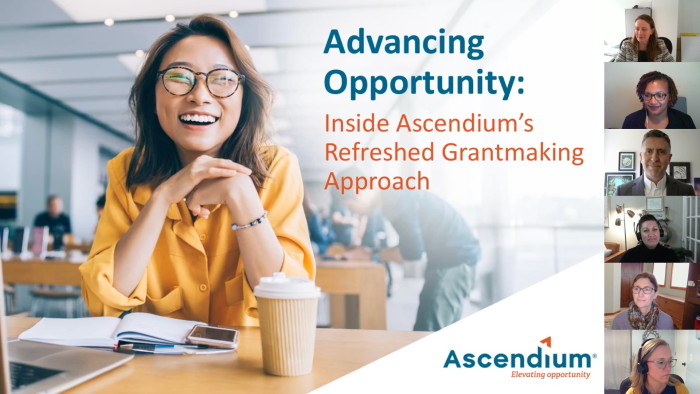Amid Shifting Demographics, Panel Explores How Immigrants Strengthen Education and the Workforce
Wisconsin faces significant workforce gaps, and immigrants are increasingly poised to fill them. With immigrants making up almost 20% of the U.S. workforce (Source: U.S. Bureau of Labor Statistics), there is a growing need to ensure they have access to postsecondary education and workforce training opportunities. These programs are crucial not only for advancing their careers but also for enabling them to fully contribute to the state’s economy. By harnessing their multilingual skills, diverse worldviews, and cross-cultural competencies, these initiatives help immigrants thrive and strengthen the workforce as a whole.
Recognizing this, Ascendium convened a panel of Madison, Wisconsin-based experts at the third annual Cap Times Idea Fest in September to explore how to better support immigrant learners and workers. The session, held at Madison College’s Goodman Campus on the city’s south side and moderated by Ascendium Senior Program Officer Valerie Crespín-Trujillo, opened with a presentation by Matt Kures, a community development specialist at the University of Wisconsin-Extension. Matt outlined the demographic challenges facing Wisconsin and the U.S., including an aging workforce, and emphasized the crucial role that foreign-born residents, who make up 17.3% of the working-age population, play in addressing these gaps.
The U.S. Foreign-Born Population is Disproportionately Working Age
Age Distribution of Population by Age Group (2018-2022)


Labor Force Participation Rates Are Higher Among Foreign-Born Americans
(Age 16 and Over - 2018-2022)


Source: U.S. Census Bureau 2018-2022 American Community Survey
Following Matt’s presentation, the panelists shared their experiences as immigrants rising to leadership positions and discussed the role of their organizations — such as Madison College, Centro Hispano, and Literacy Network — in supporting Dane County’s immigrant communities through postsecondary education and workforce training programs. These nonprofits have been instrumental in ensuring that immigrants have the resources they need to succeed.
Afterward, the panelists expressed their appreciation for the opportunity to spotlight this critical issue. “I don’t think anyone locally is talking about immigration outside of the nonprofit space, which is why this was so refreshing,” said Karen Menéndez Coller, executive director of Centro Hispano and an immigrant from El Salvador. Through her work, she helps members of the local Latinx community thrive with support from the HEART (Healing Ethno and Racial Trauma) approach. She emphasized the need for strong leaders who aren't afraid to advocate for immigrant issues and expressed hope for future forums that bring employers into the conversation.
“Oftentimes, [employers are] the barrier that doesn’t allow us to move up,” Karen said. “Unemployment rates are low, but we’re trying to [become] managers. In the construction field, we’re construction workers, we’re not designers.”
Madison College’s Zong Her spoke to similar challenges at the college level, where an increasingly diverse student population requires new types of support. While immigrant students are often highly motivated, many need English language support or additional flexibility, especially if they are student parents. “Access without support is not opportunity,” she explained “We need to all work together to be able to provide that holistic support system, that community, for all of our students … because no one organization can actually address all the gaps.”
Explore the links below to learn more about how Ascendium supports foreign-born learners at both national and local levels.


